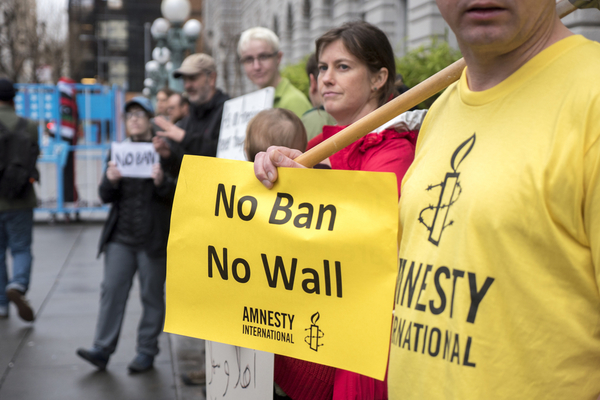Last Thursday, the Ninth Circuit issued a ruling that allowed for the continuation of the nationwide injunction against President Donald Trump’s controversial executive order which provided a moratorium on immigration from seven jihadist countries. Erroneously called the “Muslim ban,” this executive order caused hysterical liberals to do things like post memes of the Statue of Liberty crying and accuse the new President of tearing a hole in the fabric of this nation.
But this overblown reaction overlooked the fact that Trump’s executive order was a serious step away from the Muslim ban suggested during the campaign. If you could get past all the hyperbole in the reporting on the subject – and there was much – his executive order was simply a temporary pause on refugee admissions for 120 days. During that time, the administration would make efforts to improve the vetting process; refugee admissions would then be capped at 50,000 per year. This is slightly more than George W. Bush, slightly less than Barack Obama – hardly a cause for panic.
Nevertheless, when the Ninth Circuit ruled, many rejoiced. Finally, the government was acting as it should – one branch keeping the other’s power in check. But Dan McLaughlin points out that this is not the case. “The court’s opinion did not conclude, or even suggest, that Trump lacked the power as president to issue the order,” he wrote. “It didn’t resolve that issue in Trump’s favor; it was just assumed it, since it ruled against him on other grounds.”
The decision was absolutely terrible in several ways, and perhaps will be fought all the way to the Supreme Court. After all, the Ninth has a reputation for being wrong. The American Bar Association points out that it has the second highest reversal rate, at 80 percent.
But people should not herald this ruling as some sort of victory of government restraint: this decision isn’t an appropriate demonstration of the separation of powers. Rather, it’s a demonstration of judicial supremacy: the notion that the judges are not a co-equal branch of government, but a superior or supreme branch of government.
This flies in the face of Article VI of the Constitution, which reads: “This Constitution, and the laws of the United States made in pursuance thereof; and all treaties … shall be the supreme law of the land … .” Note that it says the Constitution is the law of the land, not the Supreme Court’s interpretations of it. Paul Moreno described this relatively new phenomenon of judicial supremacy like this. “… once the Court has spoken, it is the duty of the citizens and their elected officials to shut up and abide by it, because the rule of law means the rule of the majority of the Supreme Court.”
But runaway courts do not provide the “rule of law,” and they are not the “checks and balances” our Founders envisioned.
People who are afraid of the executive branch of the federal government for perhaps the first time in eight years need to face this reality: the best way to reign in a corrupt, overgrown, and perhaps even malicious government is not through the Courts, but rather through Article V of the Constitution. By calling a Convention of States, the states can limit the jurisdiction in ways that are effective, Constitutional and lasting.
Plus, it gives power to “we the people,” even those of us who do not wear black robes and rap gavels for a living.



